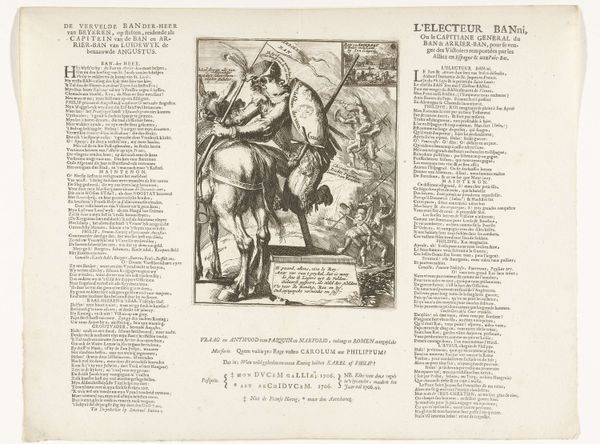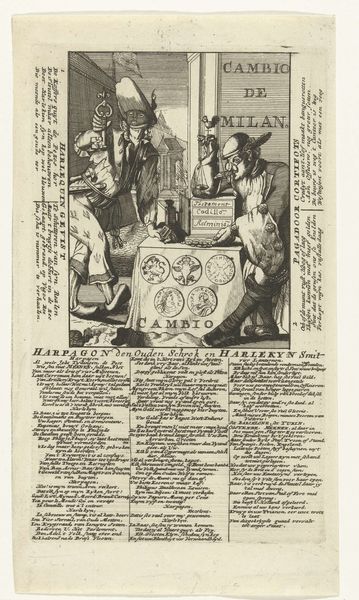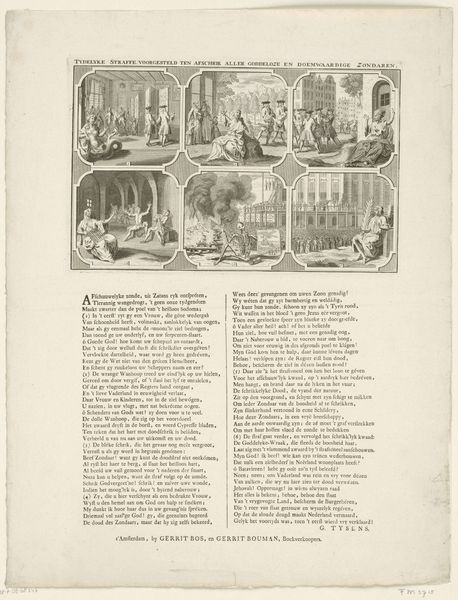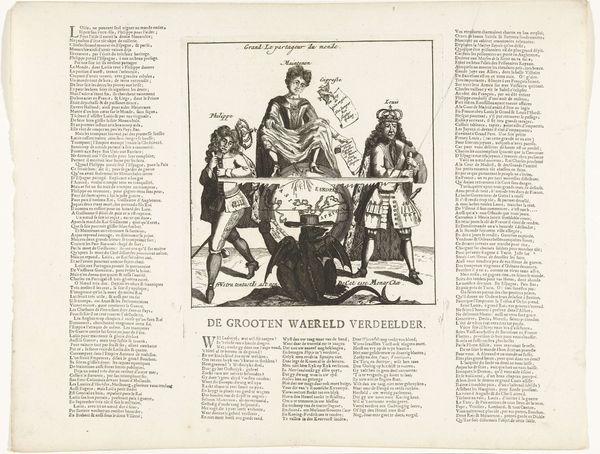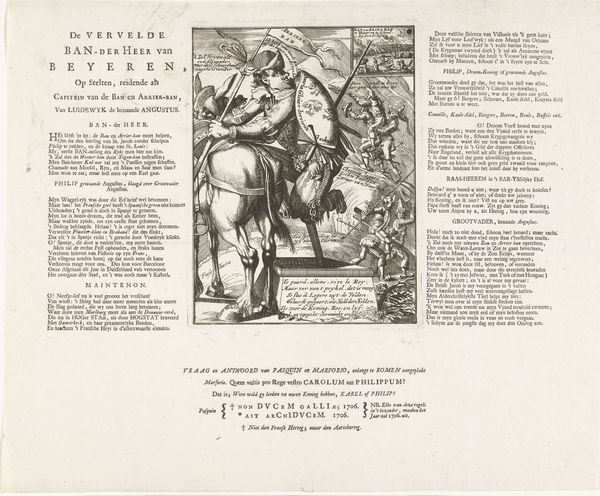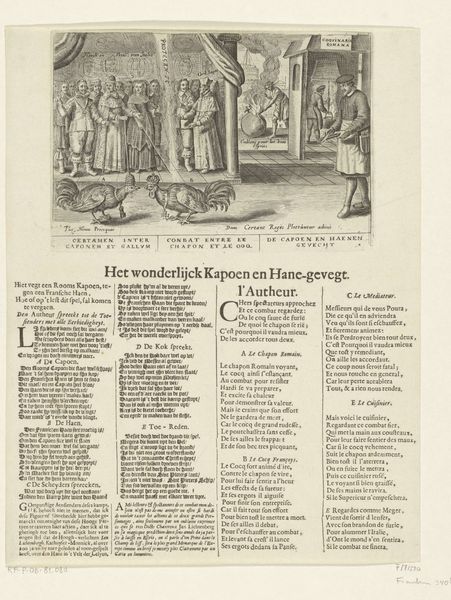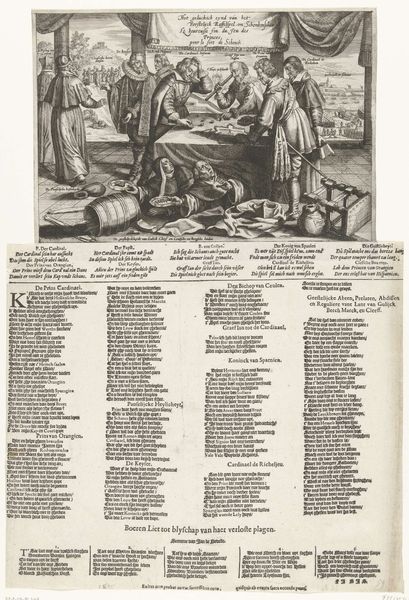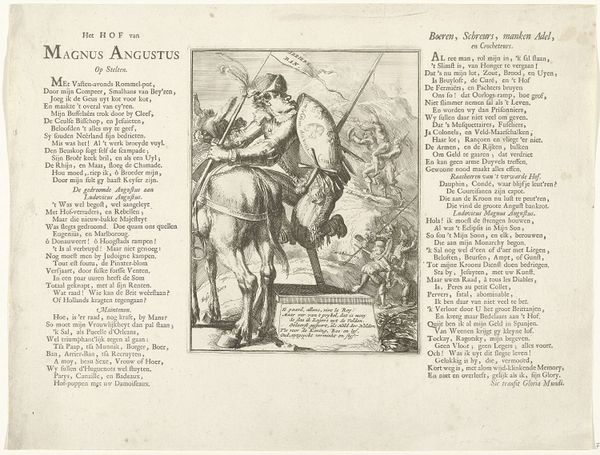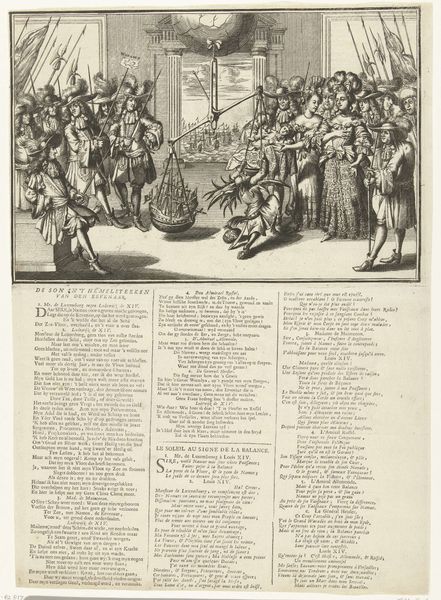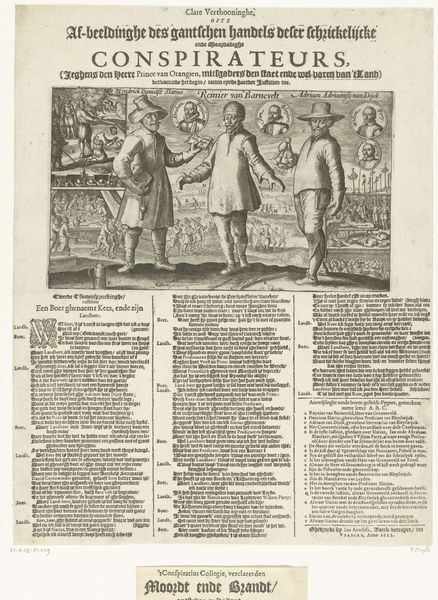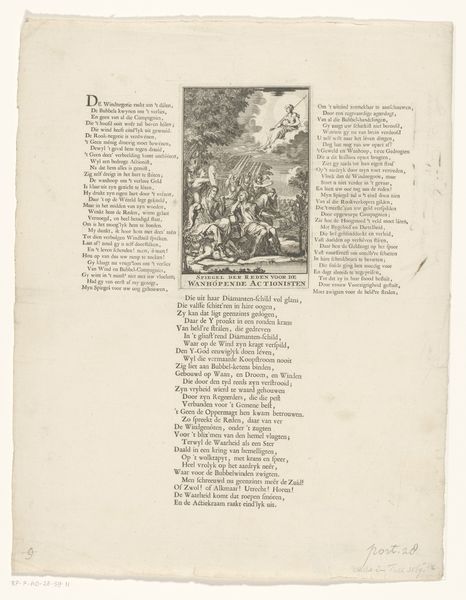
print, engraving
#
baroque
# print
#
engraving
Dimensions: height 321 mm, width 407 mm
Copyright: Rijks Museum: Open Domain
Curator: Welcome. We are standing before an engraving titled "Wisselkantoor van Lodewijk XIV, 1706," created anonymously in 1706. It resides here at the Rijksmuseum. Editor: Well, my first impression is… chaotic. The scene feels like a crowded stage, overflowing with details and conflicting narratives, executed with a tight, almost claustrophobic linework. Curator: It is indeed dense. Let’s unpack the context a bit. This print offers a scathing commentary on the financial mismanagement during Louis XIV's reign. Note the symbolic representation of currency exchange and the figures of Harlequin and Harpagon, representing deceit and avarice respectively. This piece reflects a specific moment of societal upheaval fueled by war debts and economic instability. Editor: Ah, I see your point regarding context. The composition does little to harmonize such dense imagery. The engraver uses stark contrasts to highlight the emotional themes, with little thought of depth. Notice the artist uses the very flat field upon which he arranges foreground and background elements side by side. What do you think about how that strategy informs our interpretation of its themes? Curator: Absolutely. The flatness emphasizes the artificiality of the financial system being critiqued. The labor involved in such satire points towards an intricate production process intended to make an impact on a wider audience. Prints like this were tools of social commentary, disseminated to provoke dialogue among a public affected by these very issues. Editor: I agree completely about the social dialogue here, and, personally, that dense visual vocabulary only heightens the satire, offering no resolution to that density. The formal arrangement seems deliberately skewed to cause unrest in the eye of the beholder! Curator: Indeed. And reflecting on this piece today, it reminds us of the enduring power of art to critique power structures and initiate discussions about economic disparity and societal well-being. Editor: Yes, it seems a rather permanent, satirical intervention, skillfully rendered to maximize viewer discomfort and insight!
Comments
No comments
Be the first to comment and join the conversation on the ultimate creative platform.
